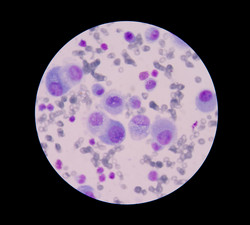The molecular link between development and nutrition
During development, the correct regulation of tissue growth is essential for functional organ formation. Yorkie (Yki, YAP in mammals) is an evolutionarily conserved transcriptional co-activator that responds to various signals to promote tissue growth. It affects final organ size by regulating cell proliferation and cell death in a variety of cell types, including some stem cells. The Hippo pathway is a key inhibitor of the Yki proliferative and anti-apoptotic activity. Although it was initially discovered in Drosophila, it is highly conserved in mammals and has a tumour suppressor function. Project partners had previously discovered that salt inducible kinases (SIKs) constitute upstream regulators of Yki. SIKs are members of the AMP-activated protein kinase (AMPK) family, regulators of various cellular and metabolic processes that respond to nutrient availability. Thus, SIKs might activate cell growth in conditions of optimal nutrient availability, thereby coupling developmental growth with nutritional status. The scope of the EU-funded HIPPOGAILITE (Regulation of the Hippo tissue growth pathway by nutrient sensing mechanisms in Drosophila melanogaster) project was to elucidate the nutritional signals responsible for Yki activity regulation. Researchers identified liver kinase B1 (LKB1) as a tissue-specific inhibitor of Yki. In humans, mutations in lkb1 lead to benign and malignant tumour predisposition while mutant Drosophila larvae exhibit brain overgrowth. Further investigation of lkb1 Drosophila mutations unveiled an increased Yki target gene expression and cell proliferation. A similar phenotype was observed in flies lacking AMPK, which is one of the primary targets of LKB1. Overall, scientists discovered that the nutrient-sensing LKB1/AMPK cascade inhibits Yki independently of the Hippo pathway. These results suggested a potential tissue-specific mode of Yki activity regulation that depends on nutrient availability and is adjusted to the proliferation requirements of different tissue types. Considering that altered metabolism and nutrient usage is a feature of cancer cells, the findings of the HIPPOGAILITE study could have therapeutic implications.
Keywords
Development, nutrition, Yorkie, Drosophila, hippo pathway, AMPK, LKB1

